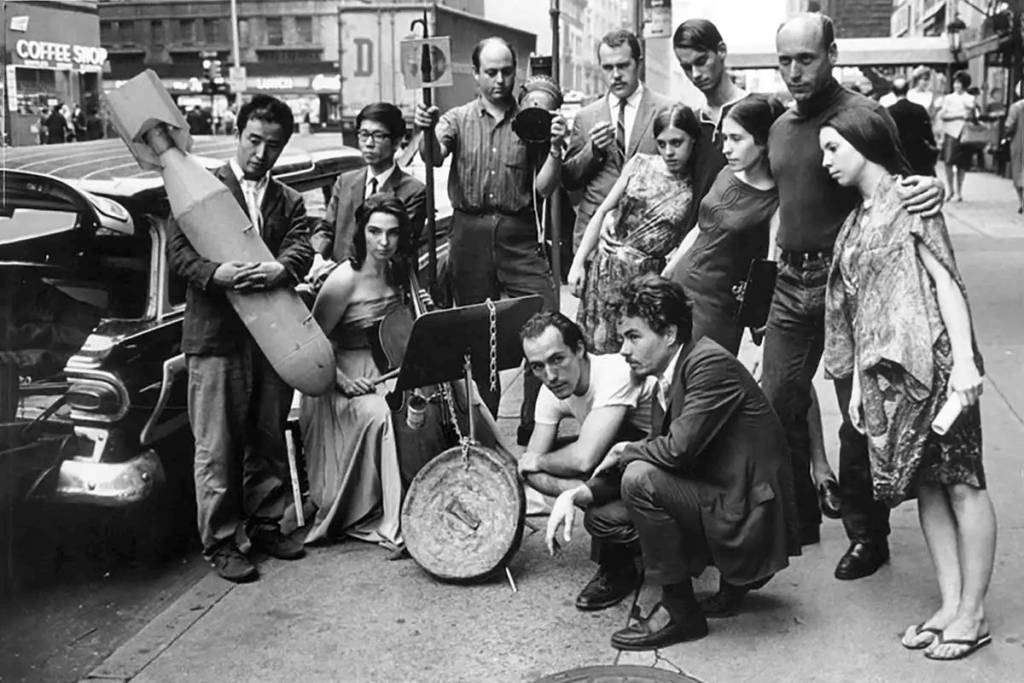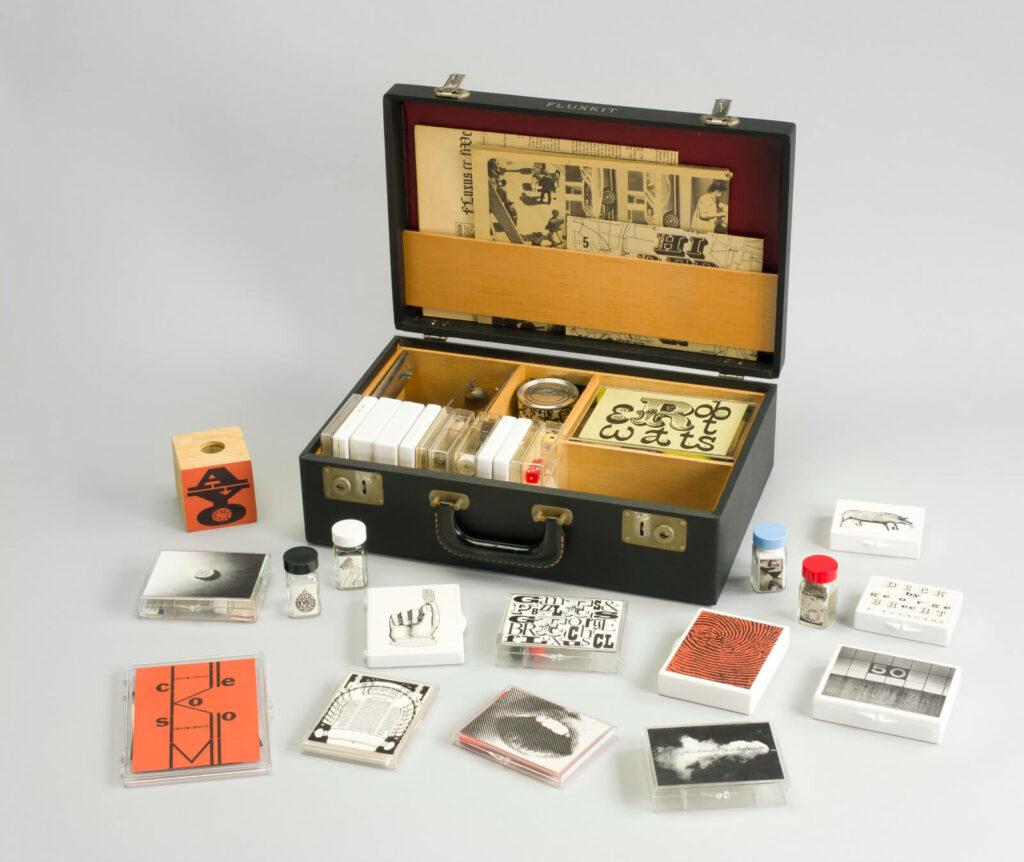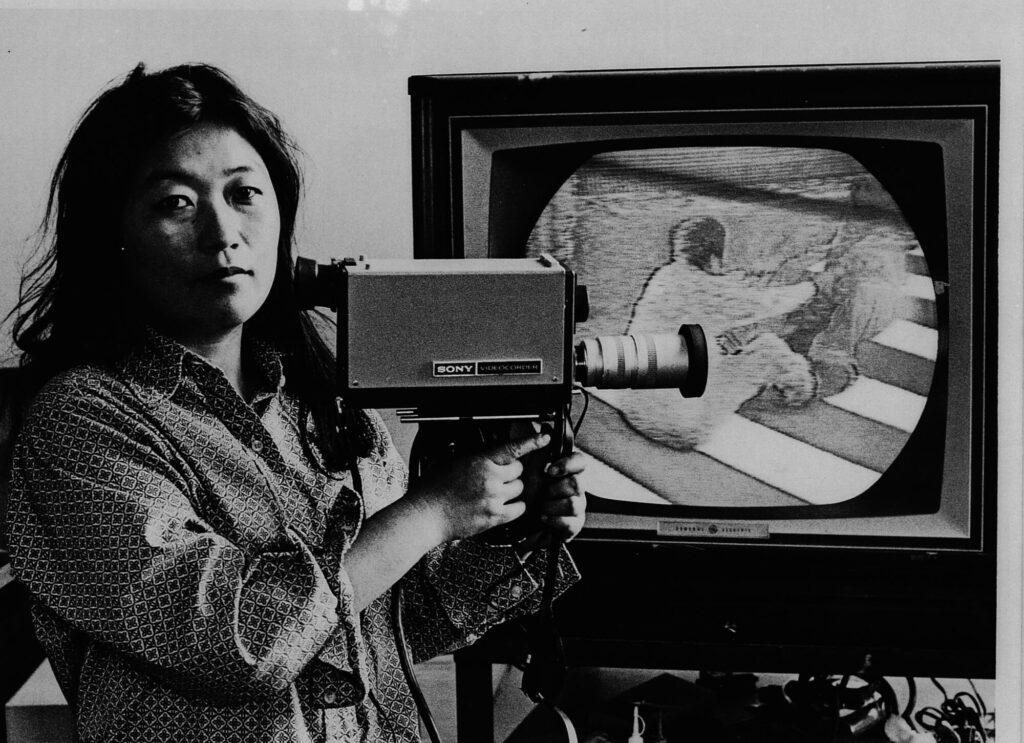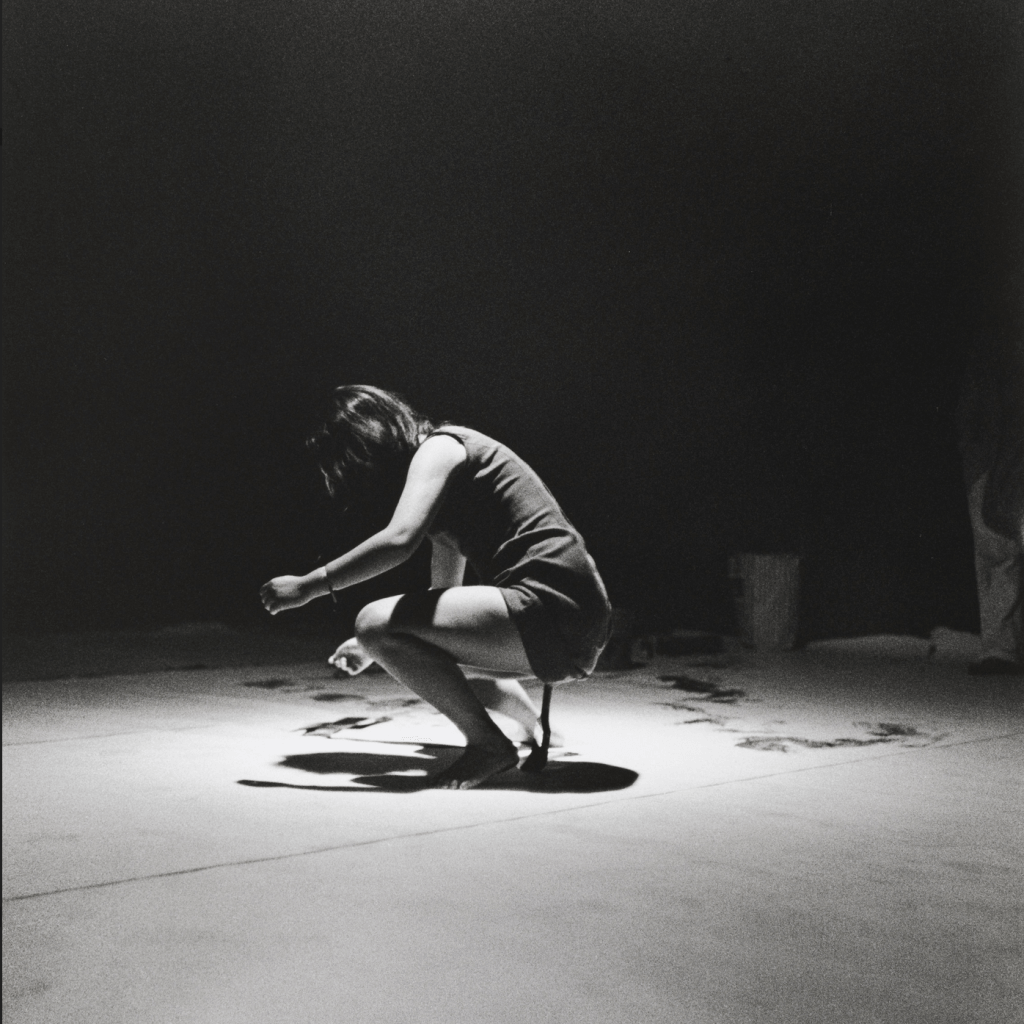In the world of avante-garde art, the Fluxus art movement stands out as a shining example of daring and unconventional creativity. Furthermore often associated with Western artists, this movement’s origins can be traced to unexpected and diverse corners of the globe. What’s more is the Four Japanese women emerged as true pioneers within this boundary-pushing landscape, reshaping the very core of Fluxus art. These women drew upon a deeply woven tapestry of cultural, historical, and societal influences to create their groundbreaking works even beyond the commonly-held perception of minimalistic Japanese aesthetics. Therefore learn more about Fluxus Art and the groundbreaking achievements of these visionary women and their fearless exploration of Japanese creativity.
What is Fluxus?
The Origin and Message of the Movement

Image Credit: The Collector
In the 1960s, Fluxus burst onto the art scene as a radical response against the elitism and commercialization plaguing art. So this movement aimed to break down the barriers between art and daily life by advocating for its seamless integration into everyday experiences. Moreover, it was spearheaded by George Maciunas, Fluxus rejected the conventional idea of art as static, gallery-bound objects, championing instead impromptu and collaborative forms of self-expression.
Central to its philosophy was the idea of “intermedia,” blurring the lines between different artistic fields and promoting the exploration of inventive modes of communication. Fluxus had a fundamental goal of democratizing the art world, striving to make it more inclusive and within reach for a broader audience. This bold movement also sought to challenge the entrenched power dynamics within the established art industry.
Events and Activities
Fluxus events, or “happenings,” encompassed a diverse array of activities, including performances, concerts, interactive installations, and street actions.

Flux Kits
Image Credit: Saint Louis Art Museum
These events were characterized by the creation of Fluxkits, which were portable collections of Fluxus artworks and objects to be interacted with by the audience, and Flux Films which delved into experimental storytelling techniques.
Fluxus artists also went beyond traditional mediums to organize dinner communes, where participants came together for communal meals as a way of expressing art. In doing so, Fluxus blurred the boundaries between art and reality, inviting viewers to actively engage in the process and challenging traditional views of art production and consumption.
Its Rise as a Global Phenomenon
Despite its origins in New York City, it didn’t take long for it to make its mark on the international art scene. From Europe to Asia and beyond, Fluxus gained popularity and ignited a sense of unity and common goals among artists through collaborations and exchanges across geographical and cultural boundaries. Therefore by the end of the 1960s, Fluxus had become a worldwide sensation, leaving a lasting impact on contemporary art and inspiring upcoming generations of artists to push the boundaries and embrace experimentation. Fluxus found its way to Japan, where four exceptional women would revolutionize its trajectory.
Shigeko Kubota
Her Artistic Journey

Image Credit: Art Asia Pacific
Shigeko Kubota’s artistic journey was marked by an unrelenting exploration into the intersection of technology, performance, and personal identity. Hailing from Japan and born in 1937, Kubota initially pursued painting, but soon immersed herself in the dynamic world of multimedia and performance art. She embraced the vibrant New York City scene of the 1960s and found a creative haven within the experimental Fluxus movement. It was during this time that she forged essential relationships with influential figures like Nam June Paik and Yoko Ono, who left a lasting imprint on her artistic vision. Through a fusion of video, sculpture, and live performances, Kubota deliberately blurred the lines between art and reality, drawing viewers into a stimulating and thought-provoking experience.
Notable works in Fluxus and the art world

Vagina Painting (1965)
Image Credit: Ellen Mueller
Kubota’s artistic impact extends far beyond Fluxus, reaching into the wider world of art with its rich and diverse contributions. Perhaps one of her most iconic creations is the notorious “Vagina Painting,” a courageous performance piece that challenged conventional notions of both femininity and creative process. Utilizing a paintbrush attached to her underwear, Kubota boldly produced abstract canvases, provoking attention and admiration for her ingenuity and boldness. Kubota’s experiments with video technology, such as her series of “video sculptures,” anticipated the rise of video art in the 1970s.
Kubota also dedicated unique works to Fluxus:

Vagina Painting (1965)
Image Credit: Ellen Mueller
Flux Napkins. Turned dining into interactive art with whimsical designs and prompts for spontaneous gestures.

Image Credit: Walker Art
Flux Medicine. Satirized healthcare commodification by packaging placebo pills in Fluxus-branded containers.
Years in Art

Image Credit: People
Yoko Ono was molded by her upbringing in Tokyo and immersion in New York City’s art scene. Moreover hailing from a distinguished Tokyo family in 1933, Ono’s relocation to New York in the 1950s marked a pivotal phase in her artistic journey. Her earlier works defied traditional artistic standards and delved into the themes of identity and pacifism, fusing Eastern philosophy with Western avant-garde techniques.
She encountered Fluxus in the 1960s and became an integral part of the movement, collaborating with artists like George Maciunas and actively participating in Fluxus events. Ono’s multicultural background infused her art with a unique perspective, propelling her to push the boundaries of contemporary art. You can check out Japanese Art to see what inspired Yoko Ono.
Iconic Impact in Fluxus
In her impactful contributions to Fluxus, Yoko Ono once famously declared, “Art is my life and my life is art.” Her sincerely held beliefs are encapsulated in this insightful speech, which highlights the unbreakable bond between her artistic expression and her personal life. So Ono’s belief that art can transcend boundaries and bring about social change struck a deep chord with Fluxus, influencing the group’s radical experimentation and interaction with daily life.

Cut Piece (1964)
Image Credit: Museum of Contemporary Art
With her innovative performances, such “Cut Piece” and “Bag Piece,” Ono challenged artistic norms and encouraged audiences to actively contribute to the meaning-making process.

Yoko Ono and John Lennon
Image Credit: People
Her partnerships with other Fluxus artists, such as John Lennon, helped the movement gain more traction and exposure by introducing its radical ideas to a wider audience. Therefore Yoko Ono has left a lasting impression on the annals of contemporary art history with her unrelenting dedication to artistic expression and social engagement. She continues to inspire Fluxus artists and art aficionados alike.
Takako Saito
How She Entered the Avante-Garde Scene

Image Credit: Rheinische Post
Takako Saito, a Japanese Woman Artist in Fluxus Art had an introduction to the movement through her encounters with Fluxus artists while studying in Europe. Born in Japan in 1929, Saito made the bold decision to move to Germany in the 1960s. It was to pursue her artistic passions. It was during this pivotal time that she became immersed in the Fluxus movement, which deeply resonated with her fun-loving and experimental approach to art. Therefore drawing from her Japanese cultural heritage and her international experiences, Saito’s art offered a distinct perspective that captivated the Fluxus community. You can check out Japanese Art to see what inspired Takao Saito.
Bringing Games and Sounds in Fluxus
Takako Saito revolutionized Fluxus with her groundbreaking use of games and sounds as tools for artistic expression. Rather than viewing art as a spectator’s pastime, Saito harnessed the interactive power of games to actively engage her audience in playful and dynamic ways.

Sound Chess (1977)
Image Credit: Museum of Metropolitan Art
Her designs of “Sound Chess” and Fluxus chess sets contradict established game rules. Moreover, it encouraged players to rethink the lines between play and art. So Saito’s investigation of sound as a sculptural medium, demonstrated by pieces such as “Kicking Box Soccer,” further extended the auditory potential of Fluxus art.

Image Credit: Takako Saito Website
You and Me Market/Do It Yourself Shop You and Me. Functioning as both a market and a DIY shop. This artwork invites visitors to trade or create their artworks using a variety of materials provided.
Mieko Shiomi
From Japan to New York

Image Credit: Art Week Tokyo 2021
Mieko Shiomi, a Japanese Woman Artist in Fluxus Art began her career in Japan, where she was born in 1938. Equally important was her life-changing adventure to New York City in the 1960s. After studying aesthetics and music composition at the Tokyo University of the Arts. Shiomi was introduced there to the vibrant Fluxus culture and met Yoko Ono and George Maciunas. Moreover inspired by the experimentation and interdisciplinarity of Fluxus. So Shiomi started experimenting with new forms of artistic expression by fusing conceptual art, performance, and music. Moreover her contributions to Fluxus and the larger contemporary art scene would be based on her cross-cultural experiences and inventive compositional technique.
Connecting People Around the World in Fluxus

Image Credit: Fondazione Bonotto
At the heart of Mieko Shiomi’s influence on Fluxus is her groundbreaking work, “Spatial Poem No. 2.” Therefore for this project, participants were sent identical postcards with instructions to indicate their current location on the card and send it back to Shiomi. The postcards were mailed to individual addresses worldwide. So the end product was a collaborative map, where different marks came together to form an artwork as a group.
“Spatial Poem No. 2” created links between people on different continents by bringing people together. Therefore through a common artistic endeavour that cut beyond geographical and cultural barriers. Moreover, with this ground-breaking effort, Shiomi illustrated Fluxus’s capacity to foster global connections through modest yet meaningful acts of creativity.
















































